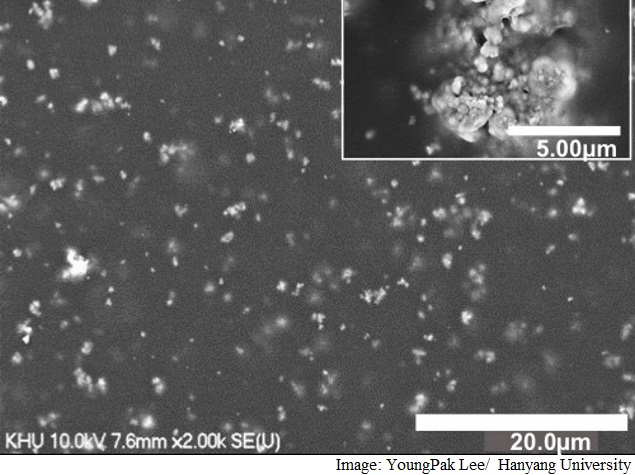- Home
- Science
- Science News
- Breakthrough to Usher in New Generation of Flexible Electronics: Study
Breakthrough to Usher in New Generation of Flexible Electronics: Study

A team of physicists and engineers from South Korea took the same approach with bismuth ferrite (BiFeO3) - one of the most promising materials whose electronic properties can be controlled by a magnetic field and vice versa.
Such materials are called multiferroics and attract interest for applications like energy efficient, instant-on computing.
The researchers synthesised nanoparticles of bismuth ferrite and mixed them into a polymer solution.
The solution was dried in a series of steps at increasing temperatures to produce a thin, flexible film.
When the researchers tested the electric and magnetic properties of the film, they found that their new material did much more than preserving the useful properties of bulk bismuth ferrite - it actually made them better.
The improved properties remained even as the film was curved into a cylindrical shape.
"Bulk bismuth ferrite has crucial problems for some applications such as a high leakage current which hinders the strong electric properties," said YoungPak Lee, professor at the Hanyang University in Seoul, South Korea.
Flexible multiferrorics could enable new wearable devices such as health monitoring equipment or virtual reality attire.
These materials could be used in high-density, energy efficient memory and switches in such devices, he noted.
The paper was published in the journal Applied Physics Letters.
Get your daily dose of tech news, reviews, and insights, in under 80 characters on Gadgets 360 Turbo. Connect with fellow tech lovers on our Forum. Follow us on X, Facebook, WhatsApp, Threads and Google News for instant updates. Catch all the action on our YouTube channel.
Related Stories
- Samsung Galaxy Unpacked 2025
- ChatGPT
- Redmi Note 14 Pro+
- iPhone 16
- Apple Vision Pro
- Oneplus 12
- OnePlus Nord CE 3 Lite 5G
- iPhone 13
- Xiaomi 14 Pro
- Oppo Find N3
- Tecno Spark Go (2023)
- Realme V30
- Best Phones Under 25000
- Samsung Galaxy S24 Series
- Cryptocurrency
- iQoo 12
- Samsung Galaxy S24 Ultra
- Giottus
- Samsung Galaxy Z Flip 5
- Apple 'Scary Fast'
- Housefull 5
- GoPro Hero 12 Black Review
- Invincible Season 2
- JioGlass
- HD Ready TV
- Laptop Under 50000
- Smartwatch Under 10000
- Latest Mobile Phones
- Compare Phones
- Realme P4x 5G
- OnePlus Ace 6T
- OPPO A6x 5G
- Samsung Galaxy Z TriFold
- Poco F8 Ultra
- Poco F8 Pro
- Huawei Mate 80 RS Master Edition
- Huawei Mate 80 Pro Max
- Asus ProArt P16
- MacBook Pro 14-inch (M5, 2025)
- Poco Pad M1
- Poco Pad X1
- Just Corseca Skywatch Pro
- Honor Watch X5
- Acerpure Nitro Z Series 100-inch QLED TV
- Samsung 43 Inch LED Ultra HD (4K) Smart TV (UA43UE81AFULXL)
- Asus ROG Ally
- Nintendo Switch Lite
- Haier 1.6 Ton 5 Star Inverter Split AC (HSU19G-MZAID5BN-INV)
- Haier 1.6 Ton 5 Star Inverter Split AC (HSU19G-MZAIM5BN-INV)

















